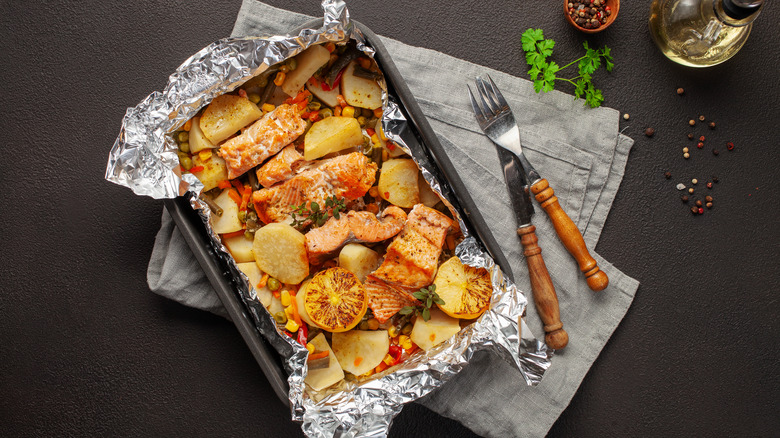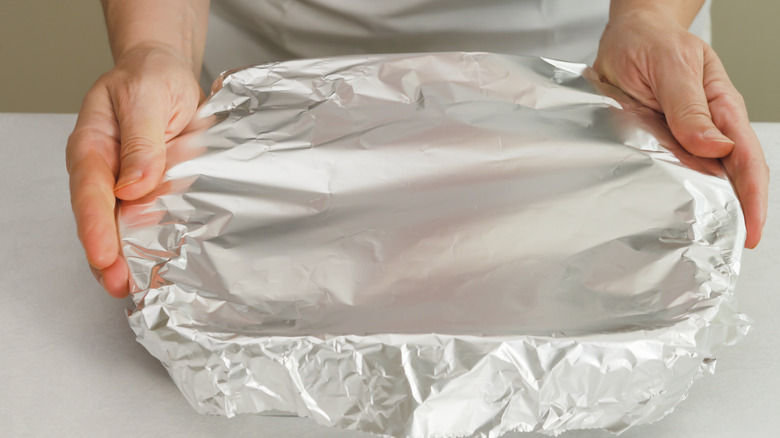How Aluminum Foil Became A Kitchen Staple
Since the 1940s, aluminum foil has been used to steam fish, protect pans, and store food (via Good Housekeeping). The shiny recyclable wrapping can tolerate high temperatures and can be easily tucked into corners of dishes, making baking treats like bread and bar cookies a relatively hassle-free experience (per Baking Bites). Though foil was initially intended for more industrial use — think lining for cigarette packets — aluminum foil is perfect for kitchen use: it doesn't smell or taste, can easily be shaped, and doesn't pick up excess oil or grease (via Spectator News).
Though France was the first to make foil from purified aluminum, the United States hopped onto the trend a decade later, and World War II pushed the need for aluminum packaging and containers (per Science of Aluminum Foil). But how did something that the Science of Aluminum Foil reports used to identify racing pigeons become a necessary object for the kitchen?
A holiday mishap yields brilliance
The European Aluminum Foil Association asserts the first aluminum plant was established in Switzerland, and by 1911, the Swiss company Tobler began wrapping chocolates in the foil. According to Reference Module in Food Science, though aluminum foil was commercially used in 1913 to wrap candies and chewing gum, it wasn't until the late 1920s that foil for household use was promoted. By 1926, the United States Foil Company, better known as the parent company of Reynolds Metals of Reynolds Wrap fame, was producing aluminum foil on a mass scale (via Taste of Home).
Many Eats describes the story of one industrious factory employee who, without a pan large enough to hold a Thanksgiving turkey, quickly grabbed aluminum foil, wrapped the bird, and became the instant hero of that year's holiday feast. Not long after, the convenient wrapping could be found in kitchens and restaurants around the world and remains an essential kitchen product to this day.

